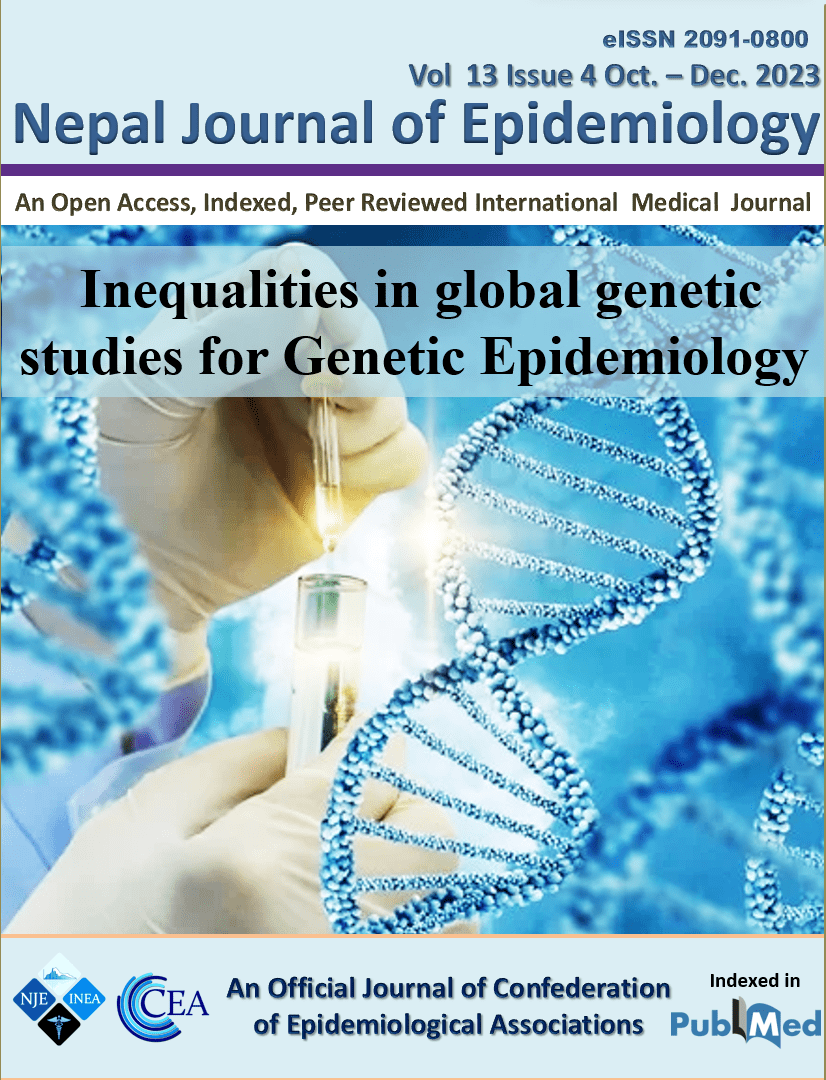Impact of nanoparticles on human health and disease
DOI:
https://doi.org/10.3126/nje.v13i4.61245Keywords:
Cellular, effect, nanoparticles, signalling, toxicityAbstract
Nanoparticles (NPs) are small particles with a surface area ranging from 1 to 100 nm in diameter that are rampantly used in different fields, e.g., medicine, engineering, and others. Because of their unique properties, such as their tiny size, magnetic properties, quantum size effects, and macroscopic quantum tunnelling effects, they are crucial for a wide range of potential applications. NPs play a significant role in the treatment of vascular disorders, the production of vaccines, and the development of drug carriers for diverse therapies due to their bioavailability, targeting ability, and efficacy. However, significant risks to the environment and health are also associated with it. NPs cause necrotic plasma membrane rupture or apoptosis, which leads to cell death. NPs interfere with cell signalling, endosomal membranes, and organelles like the nucleus or mitochondria, affecting their function. NPs cause autophagic cell death, which causes a stress response and sterile inflammation. The primary routes for the entry of NPs into the human body are inhalation, ingestion, and skin contact. NPs accumulate in the respiratory system based on their size, shape, and surface properties. NPs can cause lung inflammation and fibrosis, disrupt the endocrine system by attaching to hormone receptors, and produce reactive oxygen species (ROS) associated with DNA damage, oligospermia, and male infertility. Carcinogenic properties of NPs cause mutations, apoptosis, and inflammatory responses. Collaborative research between ecologists and epidemiologists may enlighten ways to reduce the harmful effects of NPs.
Downloads
Downloads
Published
How to Cite
Issue
Section
License
Copyright (c) 2023 CEA & INEA

This work is licensed under a Creative Commons Attribution 4.0 International License.
- Upon acceptance Copyright on any research article is transferred in full to the Confederation of Epidemiological Associations (CEA) and International Nepal Epidemiological Association (INEA). The copyright transfer includes the right to reproduce and distribute the article in any form of reproduction (printing, electronic media or any other form).
- Articles in the Nepal Journal of Epidemiology are Open Access articles published under the Creative Commons CC BY License (https://creativecommons.org/licenses/by/4.0/)
- This license permits use, distribution and reproduction in any medium, provided the original work is properly cited.

